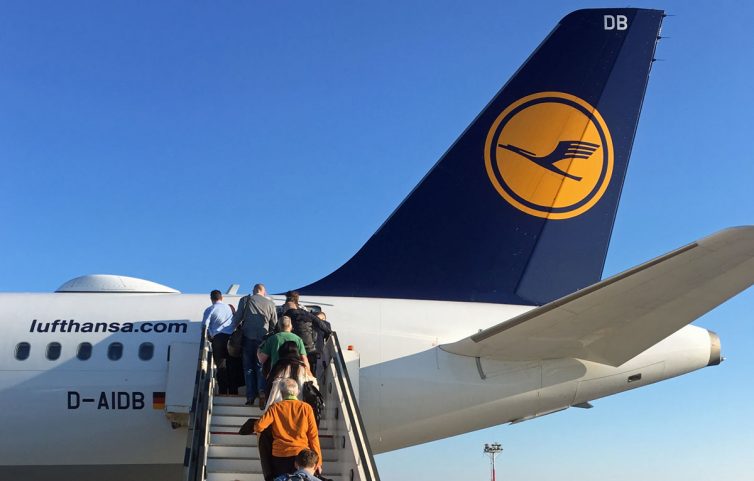
D-AIDB, one of Lufthansa’s newly-equipped IFC aircraft – Photo: JL Johnson | AirlineReporter
Here in the U.S., we have been spoiled by the ubiquity of in-flight connectivity (IFC). A few years ago the IFC saturation rate reached a level affording passengers the opportunity to adjust expectations from being a nice-to-have feature to a downright entitlement. Delta, our on-again, off-again largest domestic carrier, has long been an in-flight WiFi leader, having reached just shy of a 100% IFC-equipped fleet years ago. Thanks to early IFC pioneers like Gogo, with their ATG products, the U.S. has truly had a jump start on other markets.
Because of this, it may be surprising to our U.S. readership that IFC is not terribly common with short-to-medium-range flights in and around Europe. Lufthansa (plus subsidiaries Austrian Airlines and Eurowings) are looking to change that. In partnership with Lufthansa Technik, Honeywell Aerospace, and Inmarsat, these carriers are deploying a new IFC solution at the steady clip of eight planes per week.
I recently had the opportunity to spend some time with Lufthansa Technik to learn about Lufthansa’s new in-flight connectivity solution and even experience it first hand…
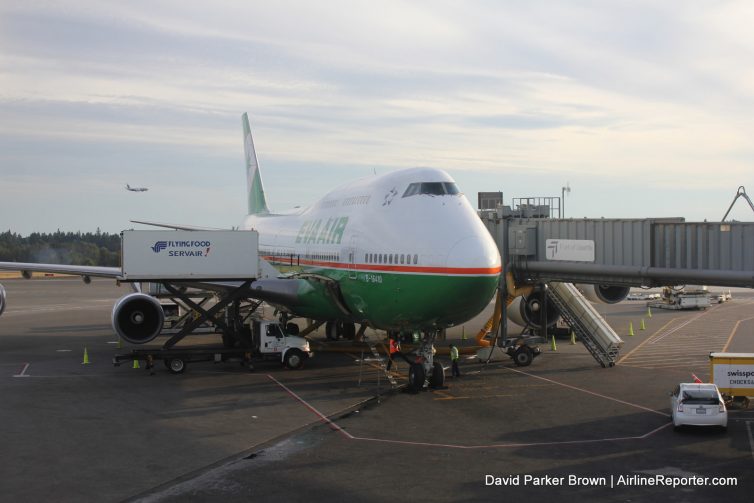
An EVA Air Boeing 747-400 sits at Seattle-Tacoma International Airport
There are certain questions I get asked over and over (and over) again from doing this gig. There seem to four that I get asked way more than others:
#1 What’s your favorite airline?
#2 What’s your favorite aircraft?
#3 What airline and/or aircraft should I avoid?
#4 Where do you buy your tickets?
I started to wonder how do others answer those questions? So I decided to ask some people who I think are kinda cool. I wasn’t sure how this was going to turn out. I ended up with some pretty interesting answers (at least I think so) so compiled them all up in this story. I think it is worth saying that no one saw anyone else’s answers before publishing. Some are shockingly similar, others complete opposites. You will have to wait until the end to see mine (because I assume my answers are the right ones).
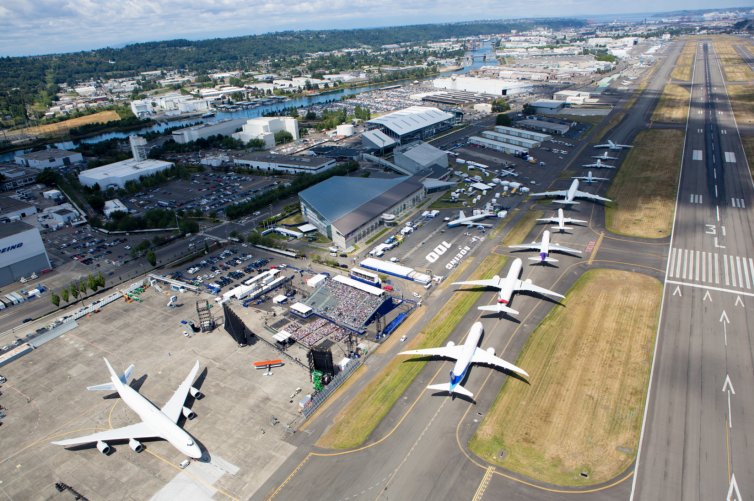
Boeing jetliners, from its first 707 to the latest 787 Dreamliner, line up along a Boeing Field taxiway in Seattle, WA on July 15, 2016 to celebrate the company’s 100th anniversary – Photo: Jeremy Dwyer-Lindgren
One of the best parts of doing this whole AirlineReporter gig is all the people that I end up meeting. Very early on I met Jeremy Dwyer-Lindgren. He was working for NYCAviation.com at the time and we were both new to the airline blogging world. He was also based in Seattle and we created a friendship and have always had a healthy competition.
It was obvious to me that Jeremy was an extremely talented photographer. Early on, I think he would agree that I often won our healthy competition, but the jealous pendulum soon swung the other direction. Soon, bigger and bigger names were looking to make use of his skills and abilities (and rightfully so). He did time as co-Editor-in-Chief with AirwaysNews (Airchive at the time) and was getting more and more freelance work — including USA Today. He has taken photos of some amazing airline-related events and some non-aviation stuff too (including the Super Bowl). He even took the photo that I am currently using on my author profile and Twitter account (while we were in Houston).
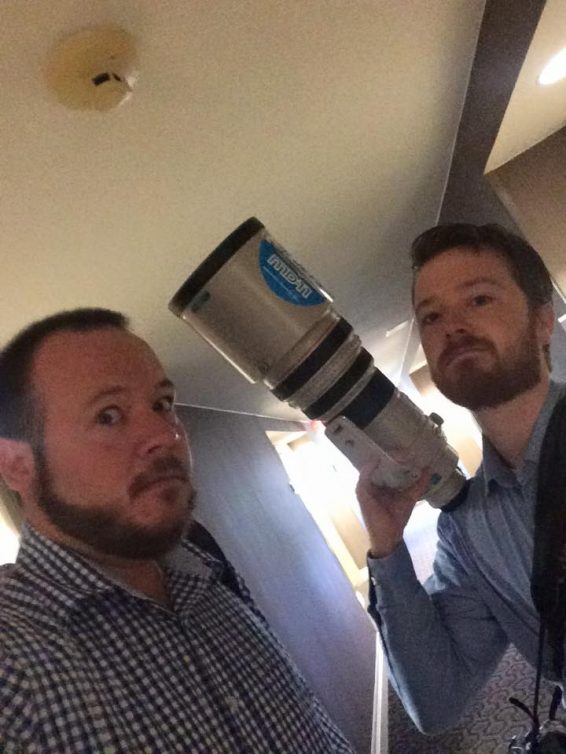
Jeremy and me getting down to business in Houston… kind of.
Going from being an AvGeek with a camera to one heck of an amazing photojournalist is quite the journey. I wanted to share some of his perspective via an interview that we had.
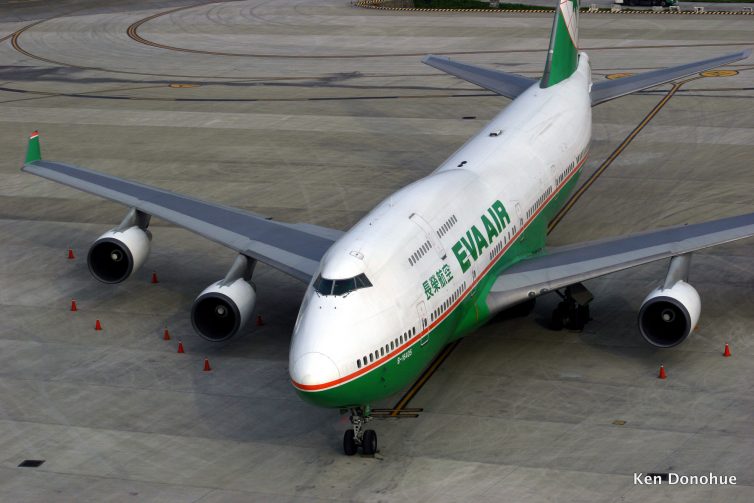
EVA Air Boeing 747-400
There is little question that the Boeing 747 is the most beautiful aircraft ever built. It’s in a class of its own. There’s a reason it’s called the Queen of the Skies.
While some modifications (just a few) have been made since the first one took to the skies in 1969, its design is timeless. From the pointed nose that rises gracefully up to the cockpit windows and that distinctive hump.
For decades, it was the undisputed leader in wide-body aircraft. With more than 1,500 ordered, airlines that flew the 747 gained instant credibility and cachet. Bigger isn’t always better, and while the Airbus A380 may be the biggest commercial airplane, it has nothing on the 747’s style and panache. The 747 is a glamorous runway model that turns heads wherever it goes – the way it struts confidently through airports around the globe. And nose onrotating off the runwayit’s a thing of beauty.
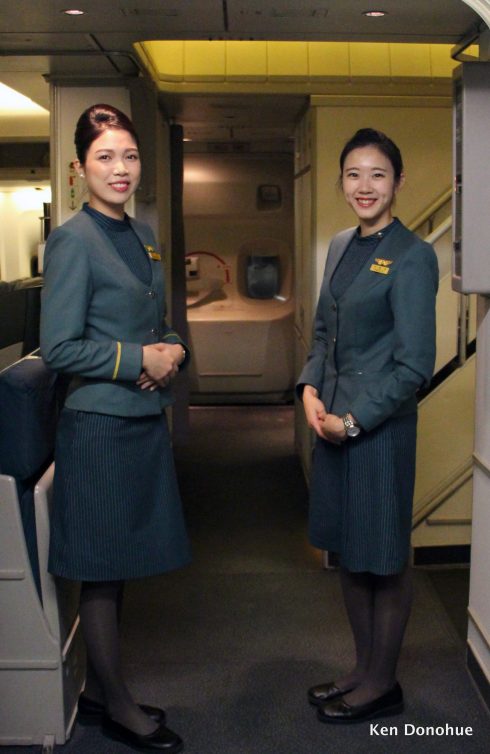
Flight attendants welcome me onboard
All good things must end, and so it is that the 747 is in its twilight yearseclipsed by the more efficient Boeing 777, bigger Airbus A380, and fuel-sipping Boeing 787/Airbus A350. With only 41 Boeing 747-8Is ordered, the writing’s on the wall. And in the coming decade, we will see fewer and fewer Boeing 747s. But there are still some airports where you can see the Queen, and take one last flight. Such is the case with my home airport in Vancouver (YVR), where EVA, China Airlines, Lufthansa, British Airways, and Qantas still have passenger operations with the type. Albeit, the latter three operate the aircraft only seasonally. This past year, BA began using the Airbus A380 in summer months, but reverts to the 747 in the winter months. Lufthansa is now the only carrier operating daily 747 passenger service to Vancouver.
AirlineReporter recently experienced EVA Air’s Boeing 747 service on the Vancouver-Taipei-Vancouver sector. The 747 once made up the bulk of EVA’s long-haul fleet. It was the aircraft the Taiwanese airline used on its first flight to North America, when it inaugurated service to Los Angeles in December, 1992. Like many airlines, EVA has been replacing its 747s with Boeing 777s, which now do most of the airline’s long-haul flying. In fact, the airline now only has three passenger 747s left in its fleet, and Vancouver is one of the few destinations to which EVA uses the aircraft. EVA executives recently told me that 747 will no longer fly the Vancouver route by July 2017, and will be completely retired from the airline’s fleet by September of next year.
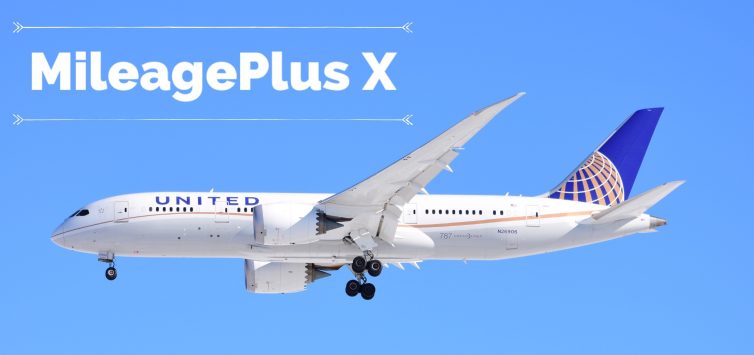
MileagePlus X: A simple way to earn free #UA787 flights – Photo: JL Johnson
Let’s get something out of the way. I am not a United fan. In fact, I have said numerous times that all things equal, I’d rather fly Spirit. Why do I bring this up? Because after using United’s MileagePlus X App for a year, I’m starting to come around. And that, my friends, is a pretty big deal. Opinions formed from years of disappointment and failures at all levels don’t change overnight. They certainly don’t change as the result of side-project ancillary revenue apps. But here I am, about to tell you why you should be a MileagePlus X user too.
The United MileagePlus X concept is simple: Use the app to buy gift cards for everyday purchases at thousands of retailers and get United miles as a kickback. Earnings per dollar spent at merchants vary widely, typically between one and five miles. Earnings are dependent upon on the merchant and the time of year. For example, the standard for Amazon seems to be one mile per dollar, but I have seen up to three. The norm for Gap/Old Navy/Banana Republic is five, but for a while during back-to-school season earnings jumped to ten miles per dollar.
This arrangement is win/win/win. United gets a slice of the transaction (yay ancillary revenue!), the retailer gets a sale they may have otherwise lost, and the consumer gets miles. The concept United is using is far from the typical dining or shopping programs offered by nearly every other airline. When I think of the words “innovative” and “pioneer” United does not come to mind. But both apply in the context of MileagePlus X.






